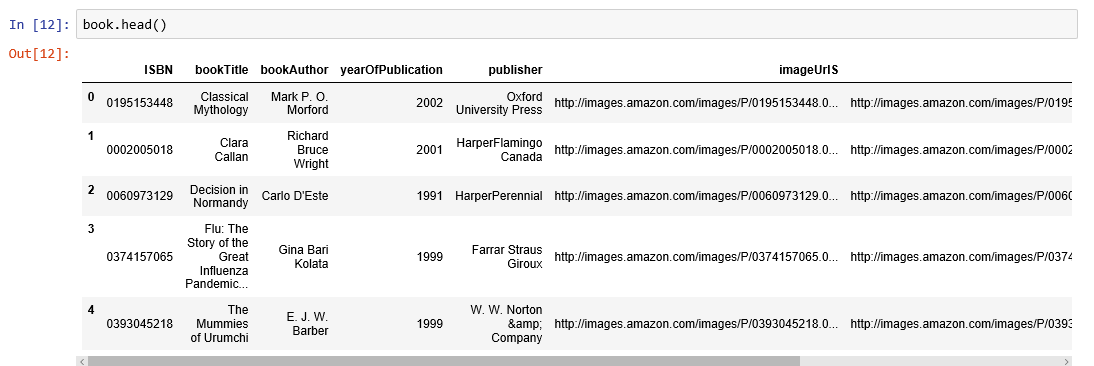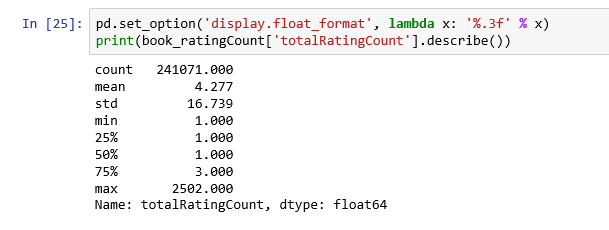How Did We Build Book Recommender Systems in An Hour Part 2
Rating info


User info


Book info


To ensure statistical significance, we will be only looking at the popular books
In order to find out which books are popular, we need to combine book data with rating data.


We then group by book titles and create a new column for total rating count.


we now combine the rating data with the total rating count data, this gives us exactly what we need to filter out the lesser known books.


Let’s look at the statistics of total rating count:


The median book has been rated only once. Let’s look at the top of the distribution:


About 1% of the books received 50 or more ratings. Because we have so many books in our data, we will limit it to the top 1%, and this will give us 2713 unique books.


Filter to users in US and Canada only
In order to improve computing speed, and not run into the “MemoryError” issue, I will limit our user data to those in the US and Canada. And then combine the user data with rating data and total rating count data.


Implementing kNN
We convert our table to a 2D matrix, and fill the missing values with zeros (since we will calculate distances between rating vectors). We then transform the values(ratings) of the matrix dataframe into a scipy sparse matrix for more efficient calculations.
Finding the Nearest Neighbors
We use unsupervised algorithms with sklearn.neighbors. The algorithm we use to compute the nearest neighbors is “brute”, and we specify “metric=cosine” so that the algorithm will calculate the cosine similarity between rating vectors. Finally, we fit the model.


Test our model and make some recommendations:
In this step, the kNN algorithm measures distance to determine the “closeness” of instances. It then classifies an instance by finding its nearest neighbors, and picks the most popular class among the neighbors.


Perfect! Green Mile Series books definitely should be recommended, one after another.
Collaborative Filtering Using Matrix Factorization


Matrix Factorization is simply a mathematical tool for playing around with matrices. The Matrix Factorization techniques are usually more effective, because they allow users to discover the latent (hidden)features underlying the interactions between users and items (books).
We use singular value decomposition (SVD) — one of the Matrix Factorization models for identifying latent factors.
Similar with kNN, we convert our USA Canada user rating table into a 2D matrix (called a utility matrix here) and fill the missing values with zeros.


We then transpose this utility matrix, so that the bookTitles become rows and userIDs become columns. After using TruncatedSVD to decompose it, we fit it into the model for dimensionality reduction. This compression happened on the dataframe’s columns since we must preserve the book titles. We choose n_components = 12 for just 12 latent variables, and you can see, our data’s dimensions have been reduced significantly from 40017 X 2442 to 2442 X 12.


We calculate the Pearson’s R correlation coefficient for every book pair in our final matrix. To compare this with the results from kNN, we pick the same book “The Green Mile: Coffey’s Hands (Green Mile Series)” to find the books that have high correlation coefficients (between 0.9 and 1.0) with it.


There you have it!


Not too shabby! Our system can beat Amazon’s, don’t you think? Look at the title screen shot!
